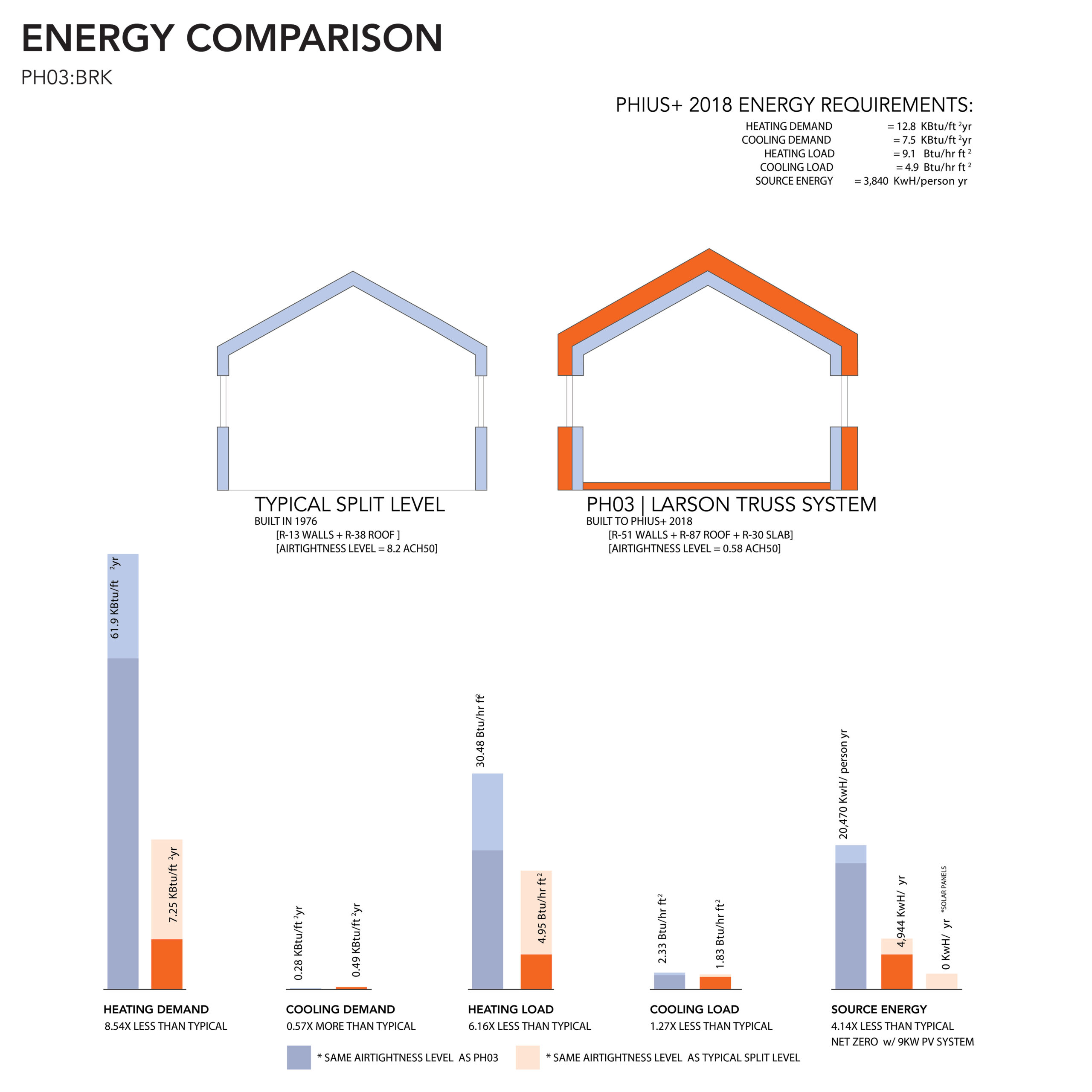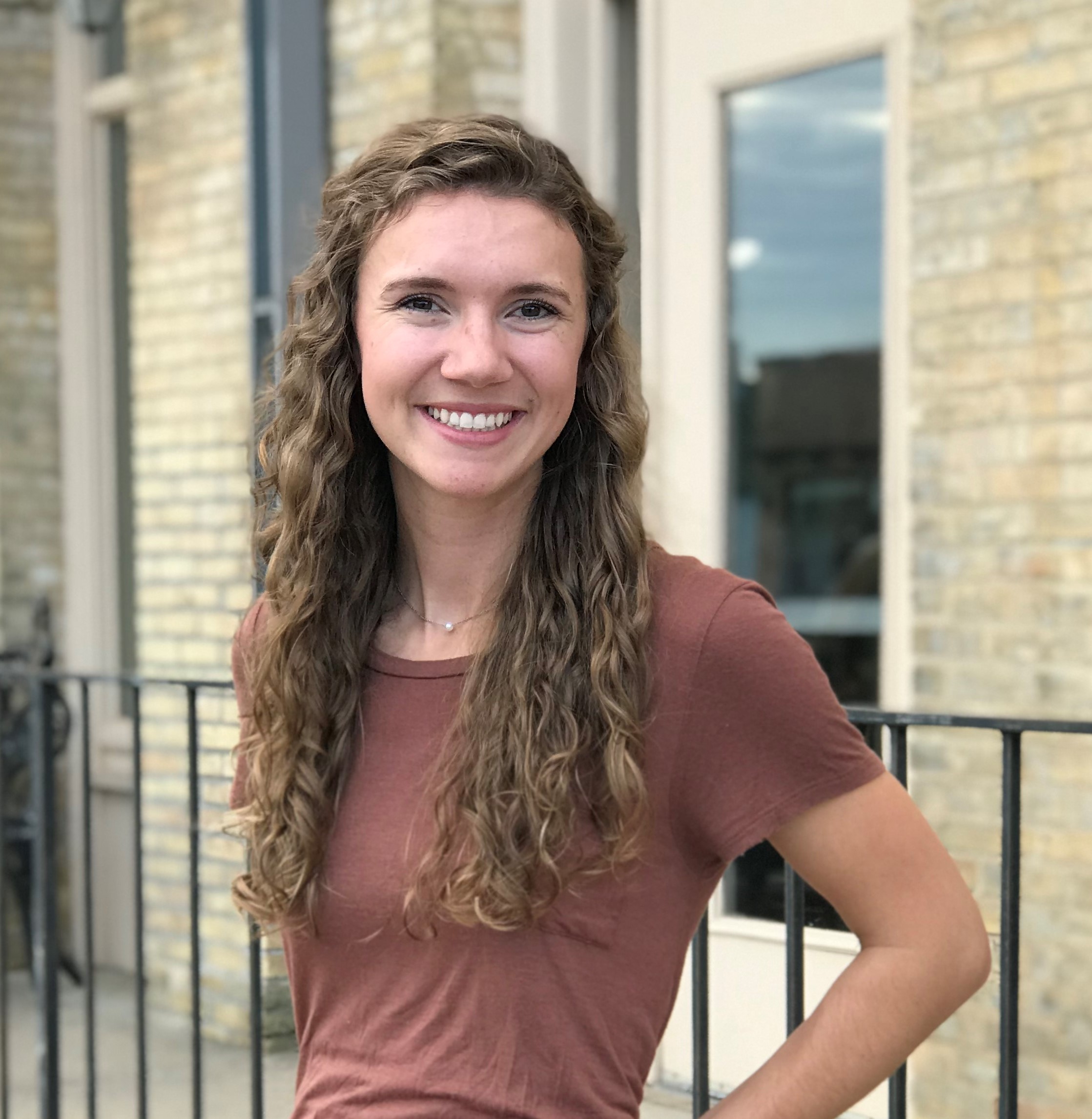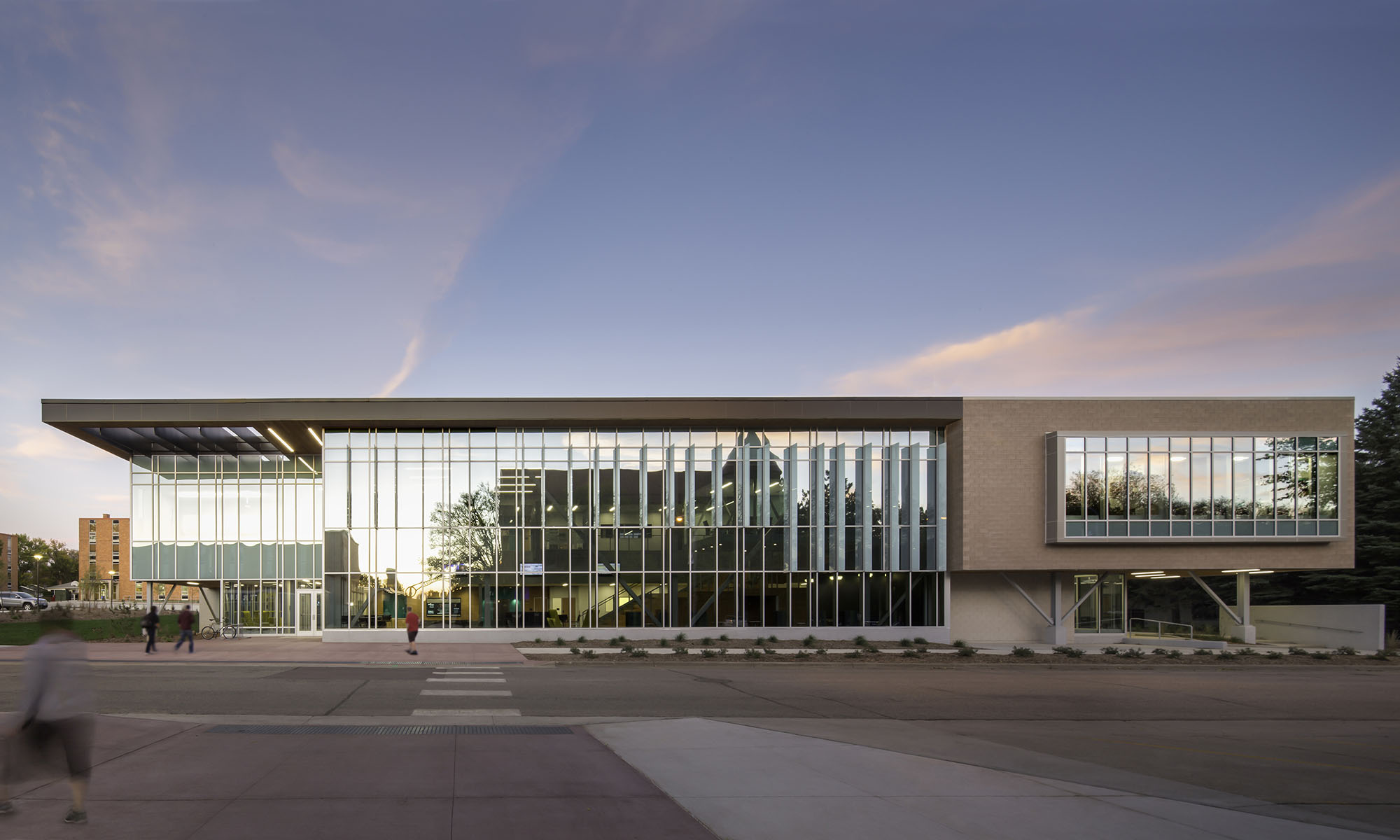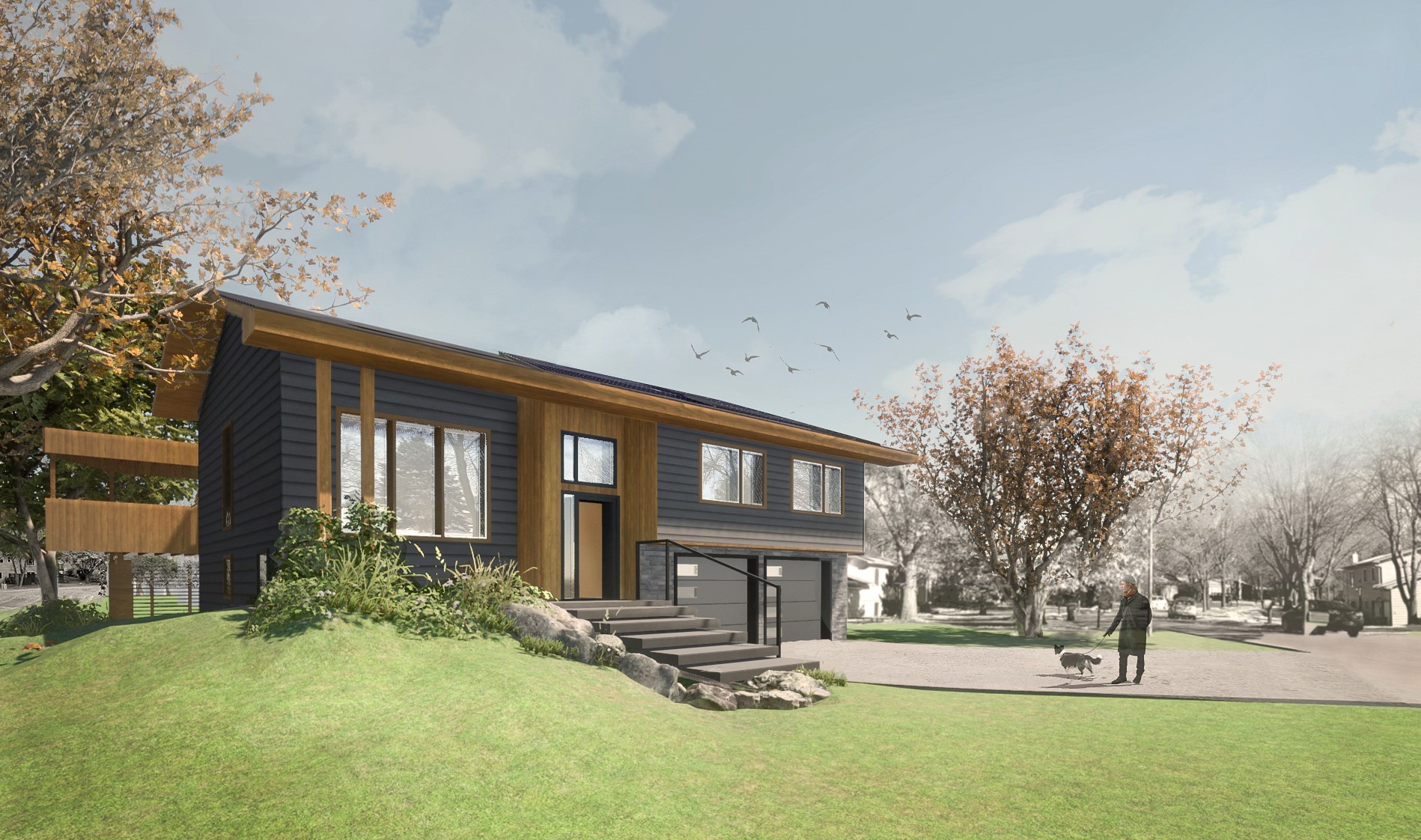As the designs and plans for our Passive House retrofit came along, so did our knowledge of how materials and their construction would impact the operational and embodied energy of the house. We quickly found ourselves immersed in powerful new programs, which we had never heard of before, but which would leverage the large section of our project focused on energy. The team got a glimpse at how subtle moves could impact the greater whole, a lesson which of course can be applied at a larger scale.
HEAT TRANSFER
One of the programs utilized during the design of the project was THERM–a software which takes a wall section, calculates heat transfer, and generates a diagram showing different temperatures throughout the wall. The rainbow of colors allows you to clearly see where the weak points in the wall are, which are in turn where the most energy is lost. And we all know that lost heat and therefore energy = money out the window. The beauty of the program is how easy it was for us to compare the thermal bridging between the existing wall construction and the new. You can see in the image below that there is a great amount of heat loss in the old floor of the house. One of the challenges we faced in the design process was trying to solve the issue of thermal bridging in the basement where we were dealing with a low ceiling height. While we realized our solution would require more labor as well as cost, the team decided to take out the existing basement floor to add insulation underneath. The effect is visible in the continuous red line of the new proposed wall section. By inserting insulation beneath a new floor slab we could achieve continuity in the envelope. Additionally, by adding cellulose insulation to the outside of the existing wall, we saw about a five degree increase of interior temperatures. THERM proved to be a very valuable tool in allowing us to see the benefits of increased insulation, and how a continuous envelope eliminates thermal bridging.
Diagram by Karly Novy
OPERATIONAL ENERGY
WUFI, which stands for Wärme-und Feuchtetransport Instationär (translates in English to “Transient Heat and Moisture Transport”), is another powerful tool employed in the designing of Passive House 3.0. Starting with a SketchUp model of exterior wall planes and openings, and other input data like number of occupants, appliances, and light loads which contribute to heating the house, the program generates calculations which determine if the project is within the range of acceptable energy loads and demands set by PHIUS. In the end, the design met heating and cooling loads and demands, source energy requirements, and air-tightness standards.
Diagram by Alex Almquist
EMBODIED ENERGY
With the confirmation that the design was meeting each of the categories of WUFI, and therefore was energy-efficient, the team thought it was important to consider the embodied environmental impacts of our decisions. Tally, a Life Cycle Assessment Revit application, allowed us to examine and compare the general building materials used in the existing house to that of the proposal. I say general because we did not select specific building materials, and so did not take into account manufacturing processes, transportation, construction, etc. Nonetheless, knowing that one of our goals was to maintain consideration of how we were impacting the environment, materials such as dense pack cellulose were selected for insulation, instead of EPS for example. The generated reports from Tally led us to an interesting discovery: as a result of our material selections, we were actually able to substantially decrease the global warming percentage of thermal protection used on the proposal, compared to the existing makeup of the house.
Tally report generated by Jocelyn Rothmeier
WHAT’S NEXT?
Throughout the designing of Passive House 3.0, we learned a lot about how small tweaks and maneuvers can actually lead to a remarkable improvement in energy efficiency. Speaking for myself, tapping into a few powerful programs helped to further open my eyes to a whole new world of material implications, as well as possibilities. The question for us became, “How can we apply our findings at the next biggest scale?” The answer to that question has yet to be explored!

Jocelyn is currently a fourth-year architecture student enrolled at South Dakota State University. She is a Co-President of SDSU’s AIAS chapter, and has learned so much from her leadership role in the organization. She is graduating with her BFA in architecture this spring, and plans to continue on a path towards her M.Arch at SDSU in the fall of 2021.


